Wakhan Valley
Wakhan Valley
The Wakhan Valley of Tajikistan is situated north from the more known Wakhan Corridor, which is a rugged region in Afghanistan. Wakhan Valley is an amazing detour from the Pamir Highway with some of the best sights in Pamir and all Central Asia. This Wakhan Valley area is characterized by steep, rough-walled high mountains and is traversed by river valleys that interweave the Pamir, Tien Shan, Karakorum, and Hindu Kush mountain ranges. This narrow strip of alpine valleys and towering mountains, extends eastward from the Badakhshan region, following the origins of the Amu Darya River in the Pamir Mountains.
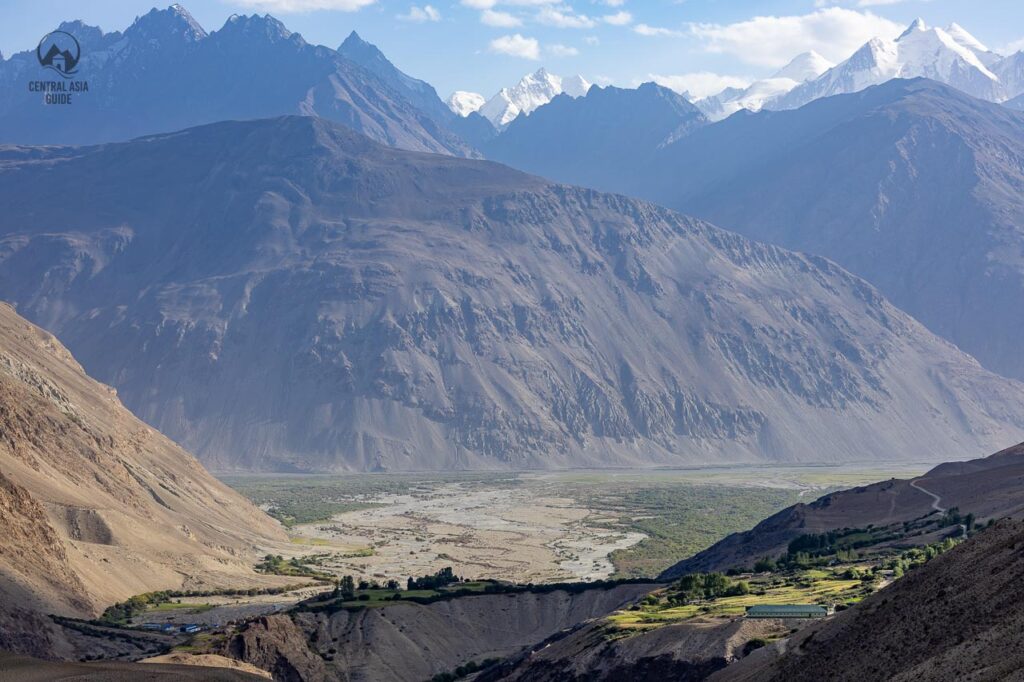

The narrow Wakhan Corridor of Afghanistan shares borders with Tajikistan to the north, Pakistan to the south, and China to the east. It stretches more than 200 km from east to west and has a width ranging from 20 to 60 km from north to south, encompassing a total area of approximately 10 300 square km. The corridor encompasses the easternmost ranges of the Hindu Kush and the southeasternmost ranges of the Greater Pamir range, where they converge with the Karakorums.
Wakhan Valley Sights
If you are visiting or planning to visit the Pamir mountains (The Badakshan region of Tajikistan), make sure not to miss the Wakhan Valley at the very southern part of it. It is not strictly a part of the official Pamir Highway but most of our Tajikistan Pamir Tours include this part of the mountains as it holds the most significant historical and some of the best natural sights, views and cultural locations in all the Pamirs and Tajikistan.
Stone calendar and house museum - Yamg
Yamg village is mostly known for being the home of a Sufi mystic, poet, musician, and astronomer Mubarak-i Wakhani (1839–1903). He was a revered Ismaili scholar whose influence on the spiritual and cultural life of the Wakhan Valley is profound. His house in Yamg has been turned into a small house museum, where visitors can learn about the Pamiri culture (and the Pamiri house) and his contributions to Sufi mysticism, poetry, and music and you can see his homemade sundial at the museum which allegedly tells the time of Nawruz, the time of Persian new year. His tomb is also located in the outskirts of Yamg.
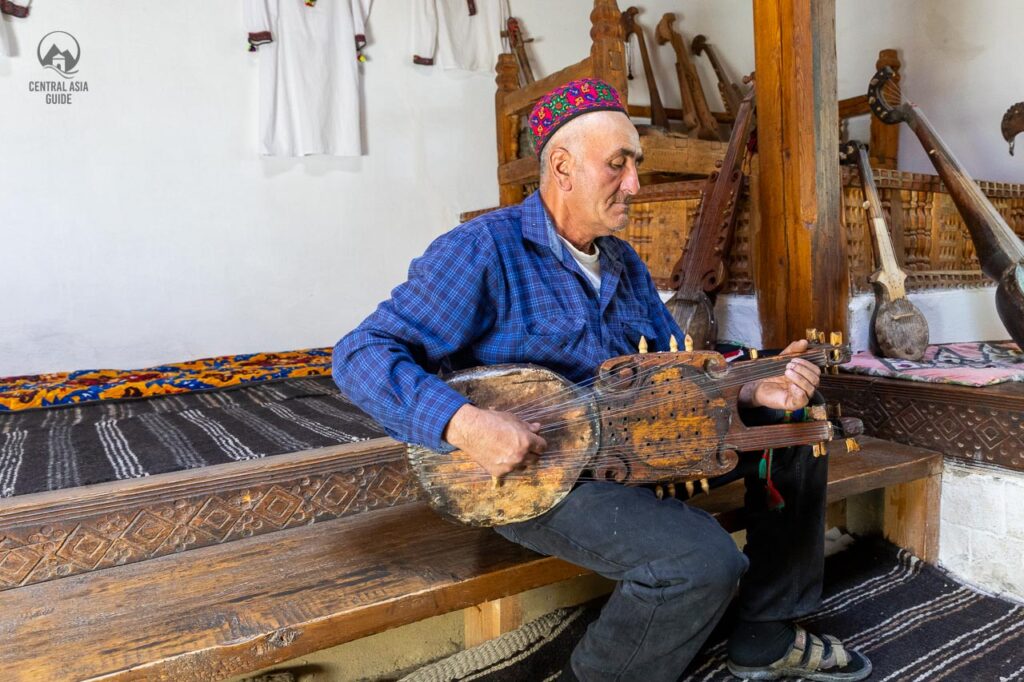
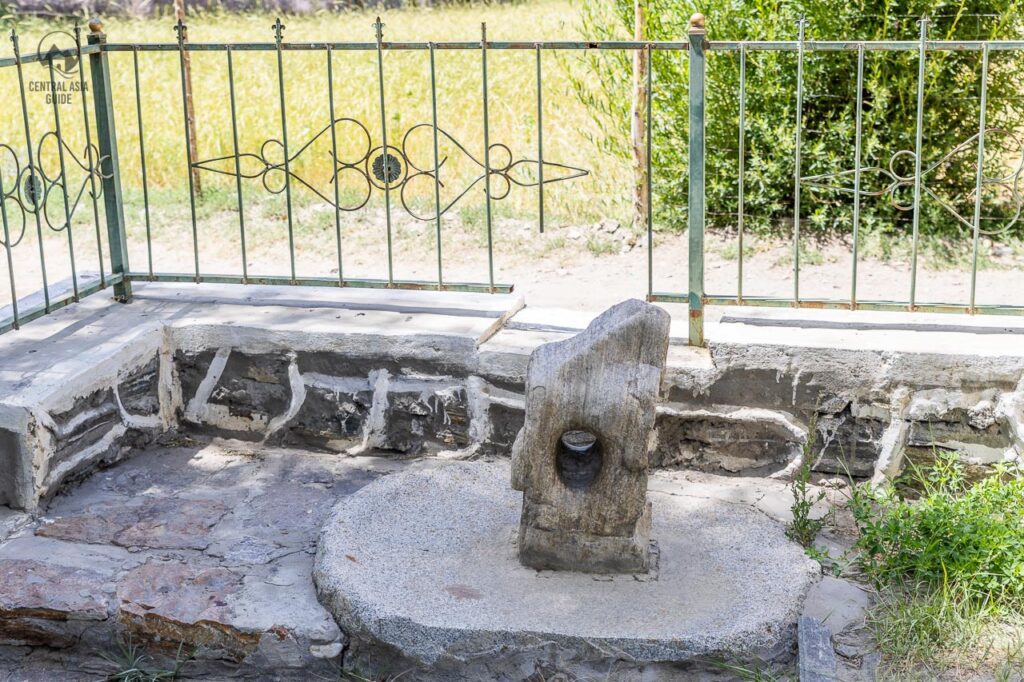
Wakhan Fortresses
Yamchun fortress
Yamchun Fortress is a well-preserved ancient fortress located near Yamg, this historic site offers incredible views of the Panj River and the surrounding mountains. It dates back to the 3rd century BCE (or 1st century BC), and its strategic location hints at the valley’s historical importance on the Silk Road as well.
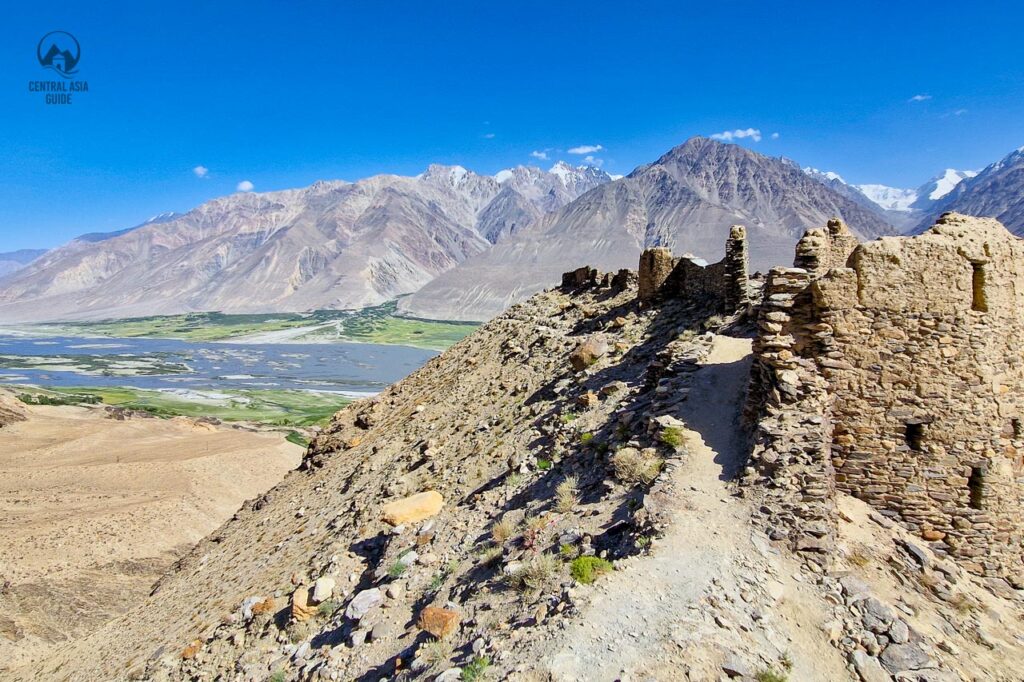
Ratm fortress
Ratm fortress is near Langar village and you need to walk for about 20 minutes to reach the site. The path is not very clear so it is best to try to employ a local child to lead you to the ruins. This fortress has been clearly built to watch over the Wakhan valley as it offers an unobstructed view over the whole route.
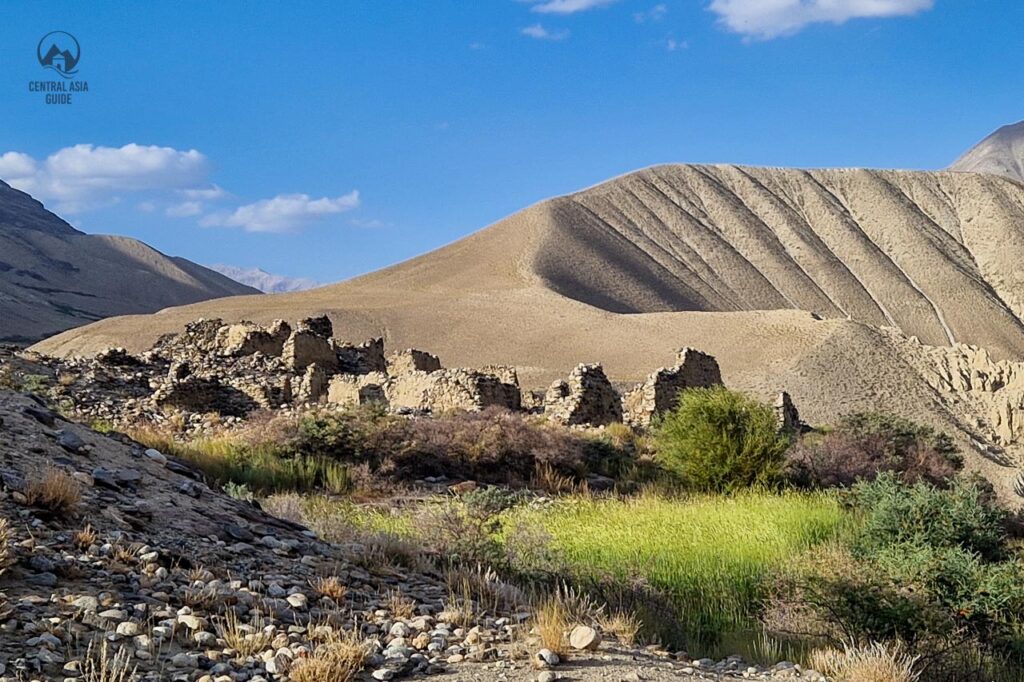
In addition to the abovementioned fortresses there are tens of other fortress ruins in the Wakhan Valley. Most remarkable of them are the Khakha fortress, Abrashim Qala and Karon castle.
Wakhan Hot springs
Wakhan Valley hosts the two most known hot springs of Pamir and Tajikistan. The Garm Chashma and Bibi Fatima hot springs. Both of the hot springs can be easily visited while driving through the valley.
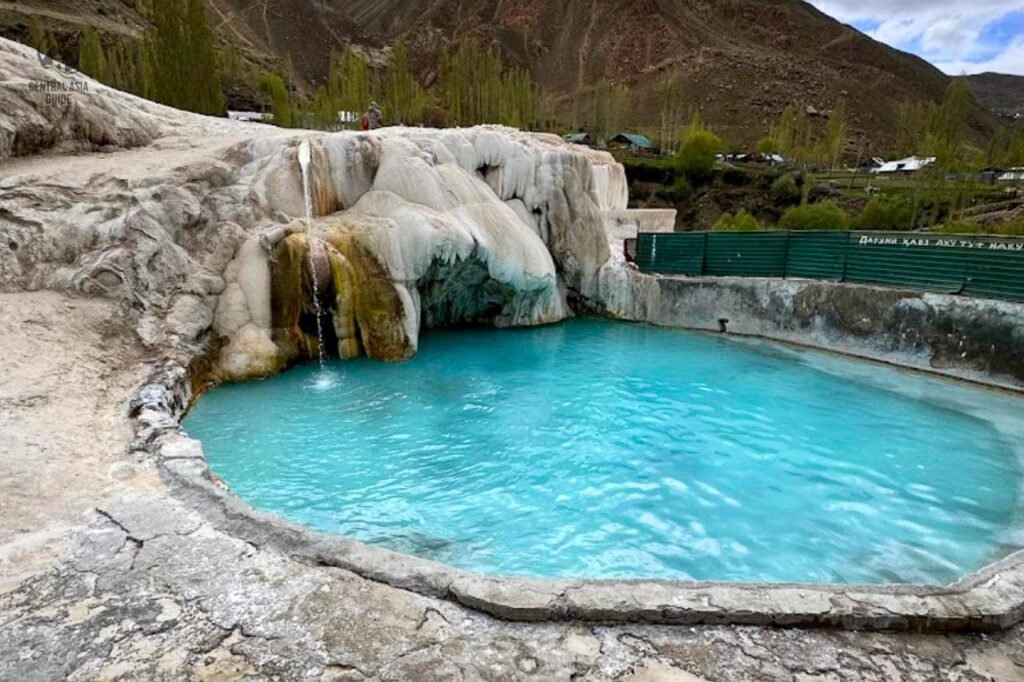
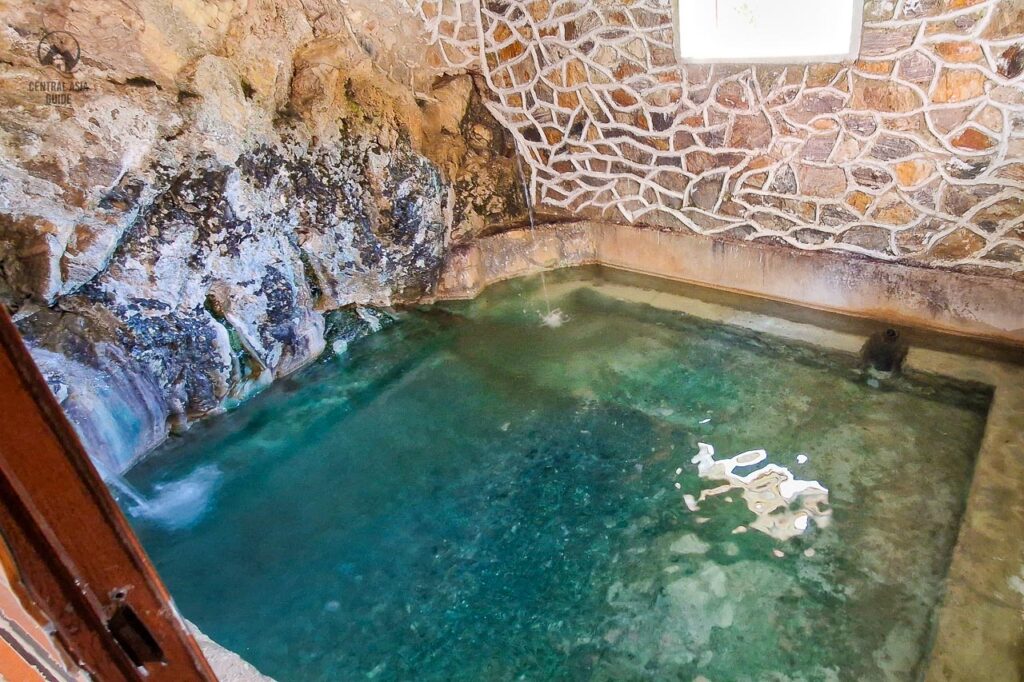
Langar Village
Located further down the Wakhan Valley, Langar is another village famous for its petroglyphs, showcasing rock carvings dating back thousands of years, depicting scenes of hunters, animals, and ancient symbols.
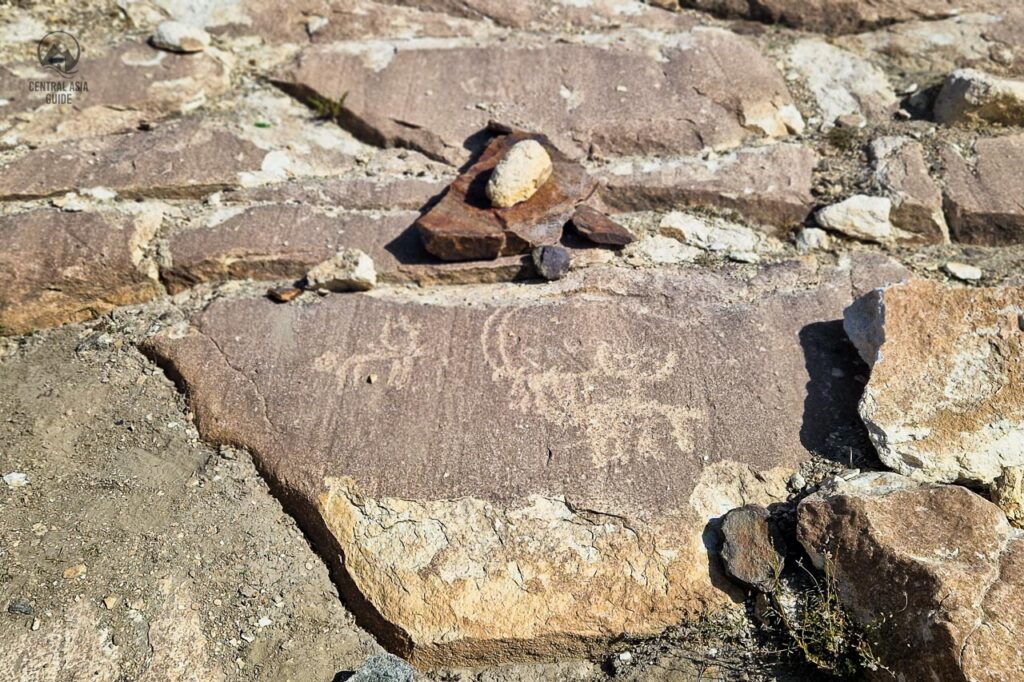
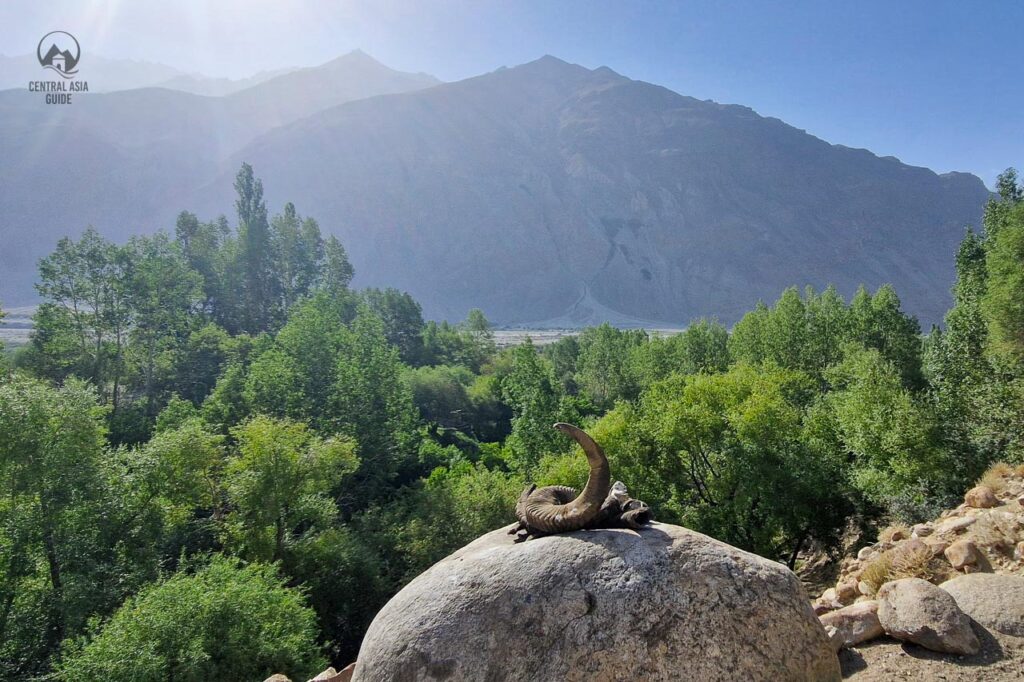
Vrang Buddhist Stupa
A reminder of the region’s diverse religious history, the Buddhist Stupa in the village of Vrang is a relic from the time when Buddhism was practiced in the region before the arrival of Islam.
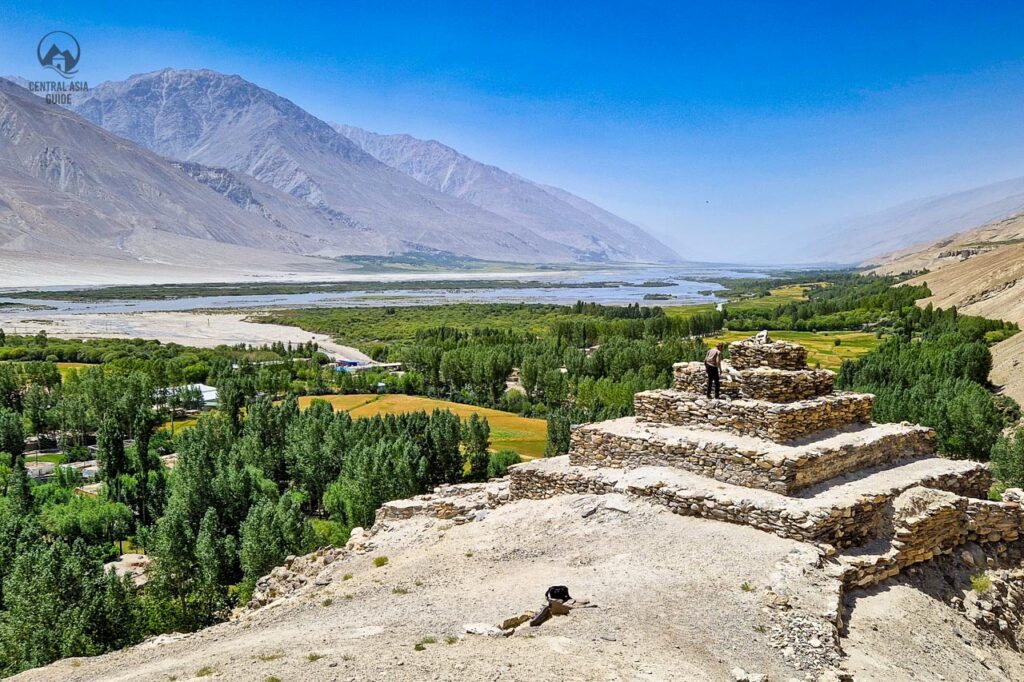

History of Wakhan Corridor
The formation of the Wakhan Corridor took place during the late 19th century as a result of geopolitical maneuvering between the British and the Russians, known as the Great Game. The primary purpose behind establishing the Wakhan Corridor was to act as a buffer zone between the territories of the two empires. The Wakhan region, including the significant geographical feature known as the Pamir Knot, possesses exceptional value in terms of its unique environment, biodiversity, and its human inhabitants, which include settled Wakhi farmers and nomadic herders who reside in yurts, namely the Kyrgyz.
The Wakhan area is divided into three distinct geographical sections. The first is the primary Wakhan strip that stretches between Ishkeshem and Qala Panja. The second is the Pamir Knot, which consists of two separate blocks of high mountains, namely the Pamir-e-Kalan or Big Pamir and the Pamir-e-Khord or Little Pamir. This division reflects the geographical and topographical features of the region. Otherwise, traveling to Afghan Wakhan corridor is currently very limited but it has started to develop again under the Taliban rule.
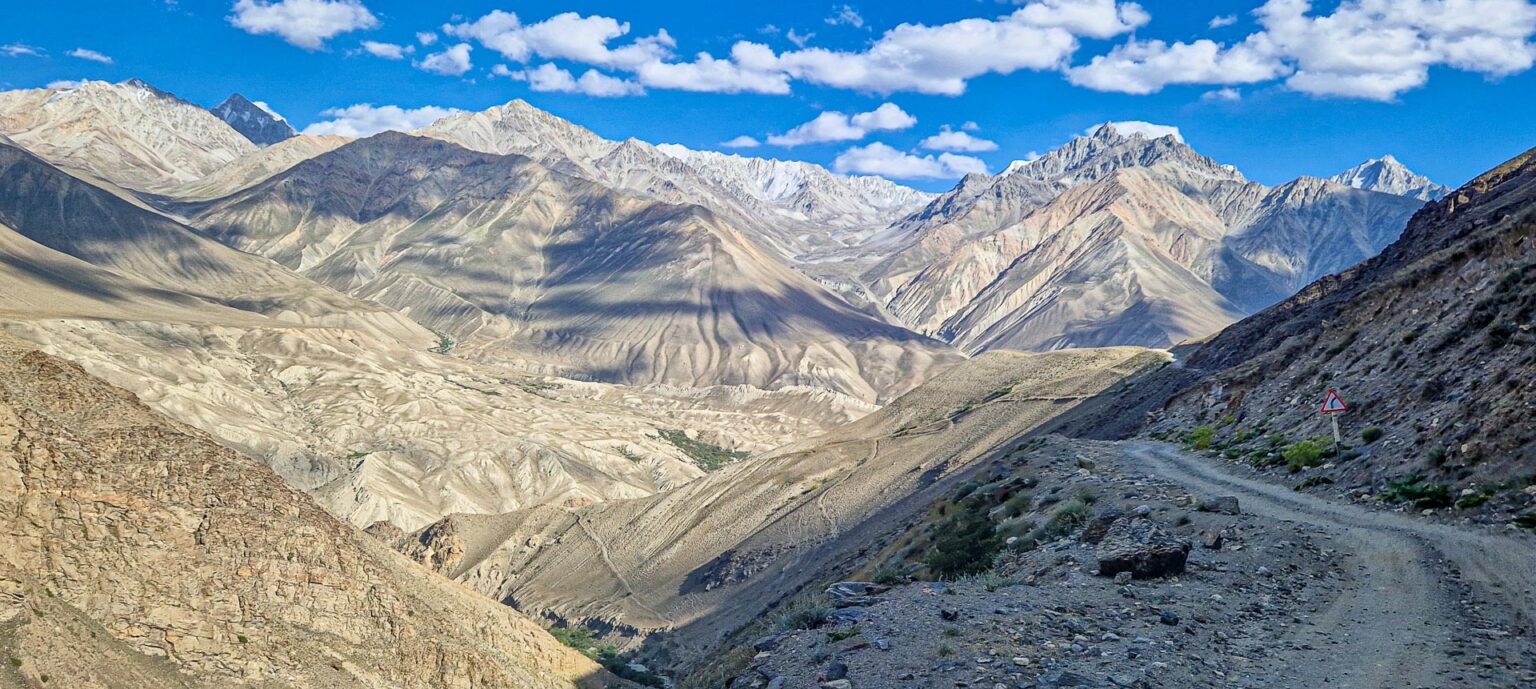
Wakhan People
The establishment of imperial boundaries during that time led to the division of the Wakhi people across three different countries. As a result, communication between these separated communities has diminished, causing each group to develop their own distinct paths. In the early 20th century, the Kyrgyz shepherds sought to protect their traditional way of life from Russian influence and sought refuge in the most remote regions of the Wakhan Corridor, where they continue to reside to this day but a portion of them have returned to Kyrgyzstan. Visiting these communities is no small feat, requiring considerable time, effort, and financial resources, but the experience is undoubtedly rewarding. Their lifestyle closely resembles that of earlier times witnessed in the Wakhan area and the Pamir region and is very much in the interest of researchers with yearly scientific visits.
On the Tajik side of the border, most of the people living in the Wakhan corridor are Tajik Pamiris and a large portion of the locals living on the Afghan side also belong to the same ethnic group but live currently a very different life.
Travel to Wakhan Valley
Wakhan Valley can be entered from two points in the Pamir Highway, by taking the road south from Khorog or taking the turn towards south near the Churkukul lake in the higher Pamir area, not far from Yashikul and Bulunkul lakes.
Destinations near Wakhan Valley
Page updated 25.9.2024